The Marvelous, Misunderstood Lives Of Common Spiders
These eight-legged crawlers have an unnecessarily bad rap.
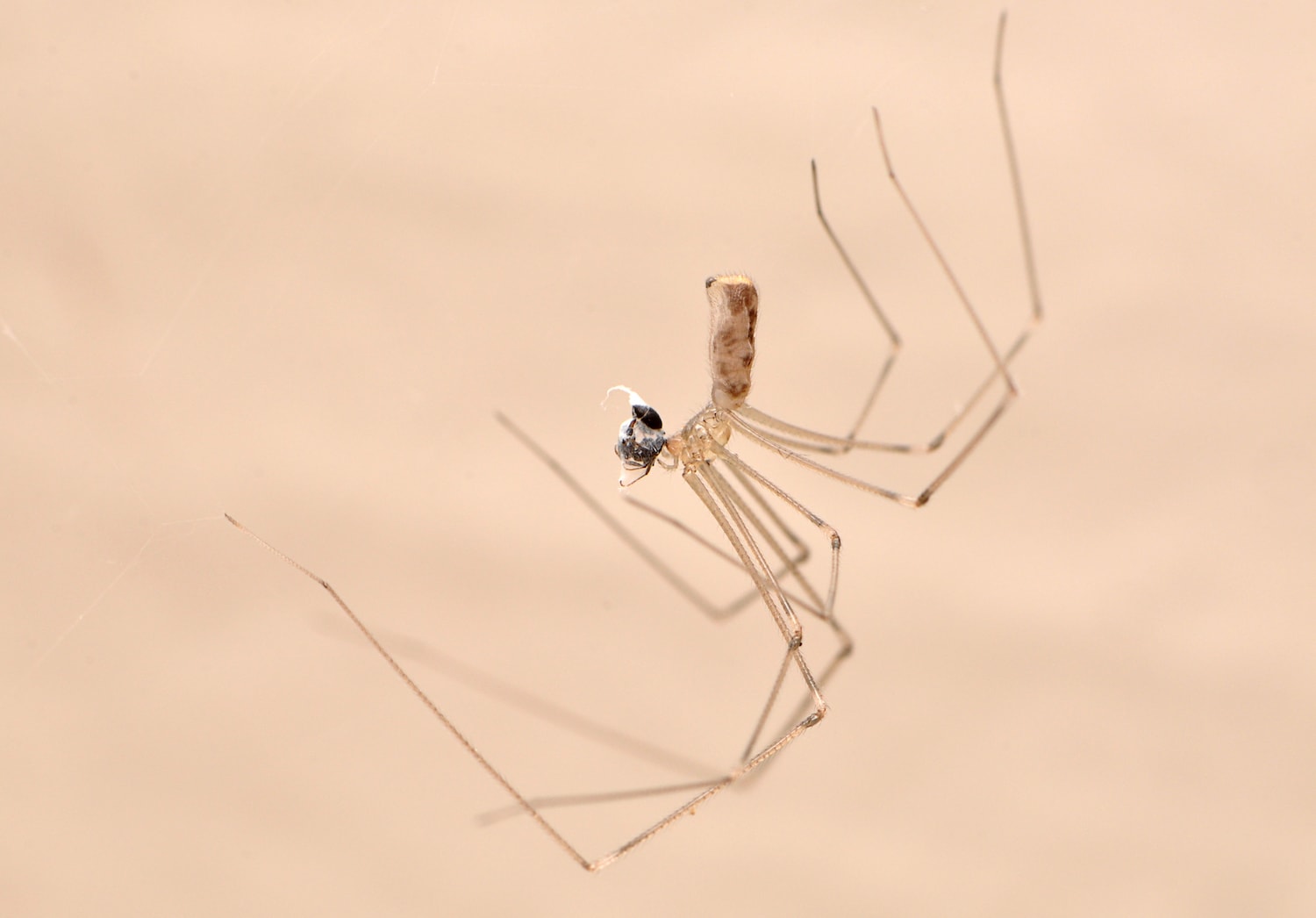
Cellar spiders can disappear before your eyes. When it’s startled by a predator (or by you), they drop down, dangle by the string of their web, and spin so fast that their geeky, spindly bodies seem to vanish, explains Eleanor Spicer Rice, writer and entomologist. Credit: Matt Bertone/courtesy University of Chicago Press
Right now, in the dark cracks and corners of most homes and buildings, the cellar spider (Pholcus phalangioides) is performing a dance of death. When it comes across another spider’s web, it will place its lanky legs on the edges and tremble, creating the same kind of vibrations a trapped insect might make—a behavior scientists call “aggressive mimicry” or “death dance.” The hungry web owner creeps out to eat the captured “snack,” but instead finds itself the prey.
“The cellar spider tosses a silk web over it, wraps it up, and eats it,” Dr. Eleanor Spicer Rice writes to SciFri in an email. “Then, to add insult to injury, the cellar spider moves on into its victim’s web, gobbling down all the creatures that got snagged by the work of the deceased spider.”
The cellar spider is just one of the many common spider species you most likely have encountered if you live in the United States and Canada. Although they are widely feared by the greater public, to scientists like entomologist and writer Spicer Rice (whose phone used to autocorrect to ‘Dr. Spider Rice’), spiders have marvelous lives that are commensal and helpful to our own.
“Spiders are amazing, and they’re necessary. And they’re everywhere,” says Spicer Rice, who co-authored the book Dr. Eleanor’s Book of Common Spiders with biologist Chris Buddle, set to be released in January 2018 by University of Chicago Press.
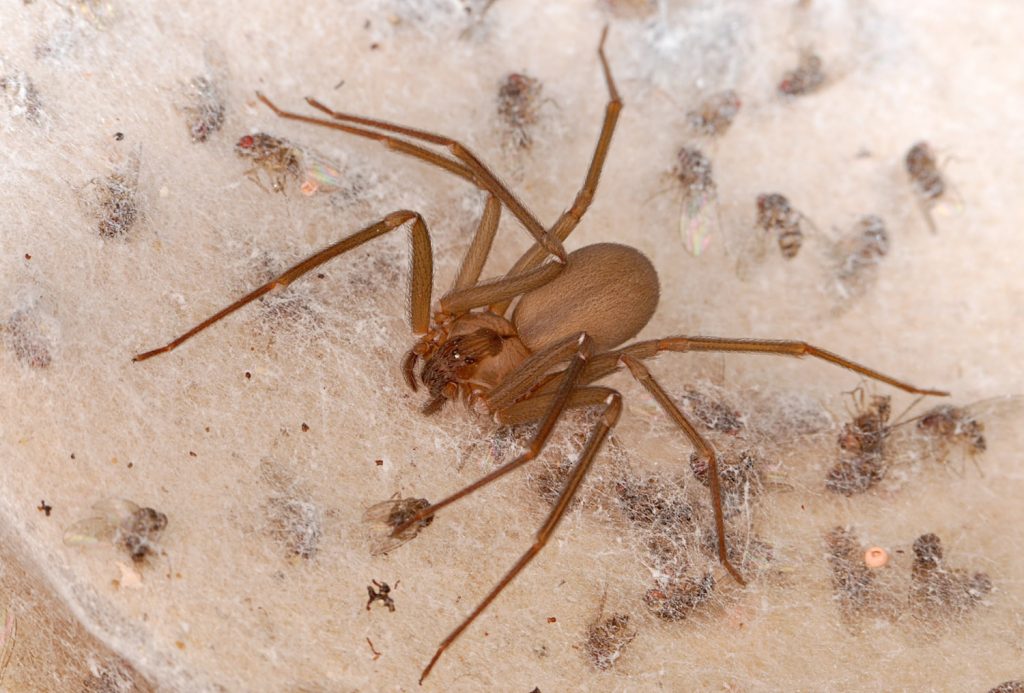
When she started writing the book, though, Spicer Rice would jump at the sight of some spiders during her research. But her fear shifted into fascination.
“After I learned more about them and what they did in the world, I started to like them. And then I started to love them.”
In fact, spiders have a trove of traits that benefit humans. You actually may want to keep certain species of common spiders around the home as a natural pest control—cellar spiders, for instance, feast on woodlice and mosquitoes in addition to their spider brethren, while spiky-legged lynx spiders roam over farms eating up agricultural pests. Plus, scientists have taken advantage of spider’s strong silk to develop body armor technologies and explore antiseptics.
[Leonardo da Vinci was a master of both art and science.]
Yet, spiders still have a bad reputation. In human culture, the deck is stacked against them, with childhood horror stories, the venomous fangs, the urban legend that they crawl into your mouth at night (which Spicer Rice debunks in her book with a simple “No”). Experts have even found evidence that some people may be evolutionarily predisposed to fear them, as Spicer Rice explains in her blog. But it’s all for naught.
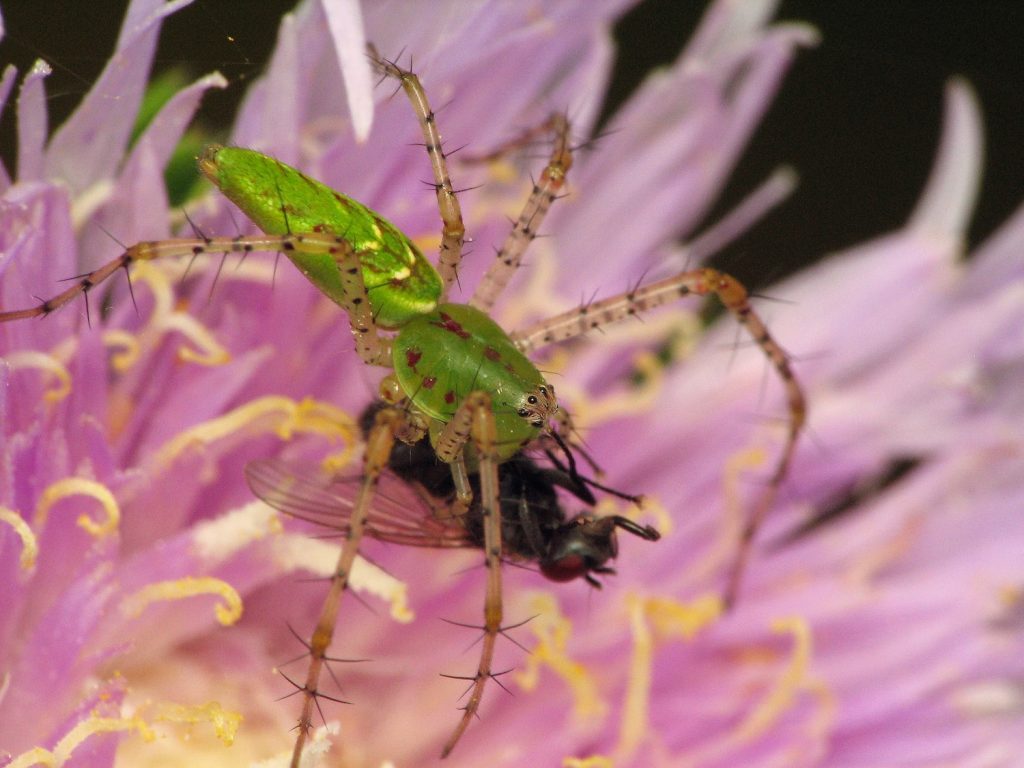
“Spiders really have no interest in biting people, unlike a lot of other arthropods like mosquitoes, and ticks, and mites that feed on human blood,” Catherine Scott, an arachnologist at the University of Toronto, told Science Friday in a previous interview. She is working in collaboration with Spicer Rice on the citizen science project Recluse or Not?, which is trying to better identify brown recluse spiders in the wild. “The only reason a spider would bite you is if you’re crushing it, or sort of otherwise harassing it, and it feels like it’s got no other choice but to try to defend itself.”
Although almost all spiders are equipped with venomous fangs, very few cause significant reactions in humans—the severity varying by person and by spider, explains Spicer Rice. In North America, there are only two kinds of spiders with bites that can sometimes be medically dangerous: the brown recluse and widow spiders. Even so, these spiders do not feed on humans.
[A stellar collision tells of the origins of gold on Earth.]
For the most part, spiders are “just trying to be spiders,” says Spicer Rice. These often tiny arachnids scurry around out of sight, preying on insects and other spiders, and keeping to themselves.
“Spiders are a part of our daily lives, whether we know it or not, and whether we like it or not,” says Spicer Rice. “They’re doing wonderful and weird things all around us. And once you know about it, the world becomes a little more familiar to you, and a little more beautiful.”
As the temperatures cool this autumn, and common spiders emerge from their outdoor dens and make their way into the warm solitude of your home, think twice before squashing them. Here are some of the more common species you may come across in the wild and in your home, featured in Dr. Eleanor’s Book of Common Spiders:
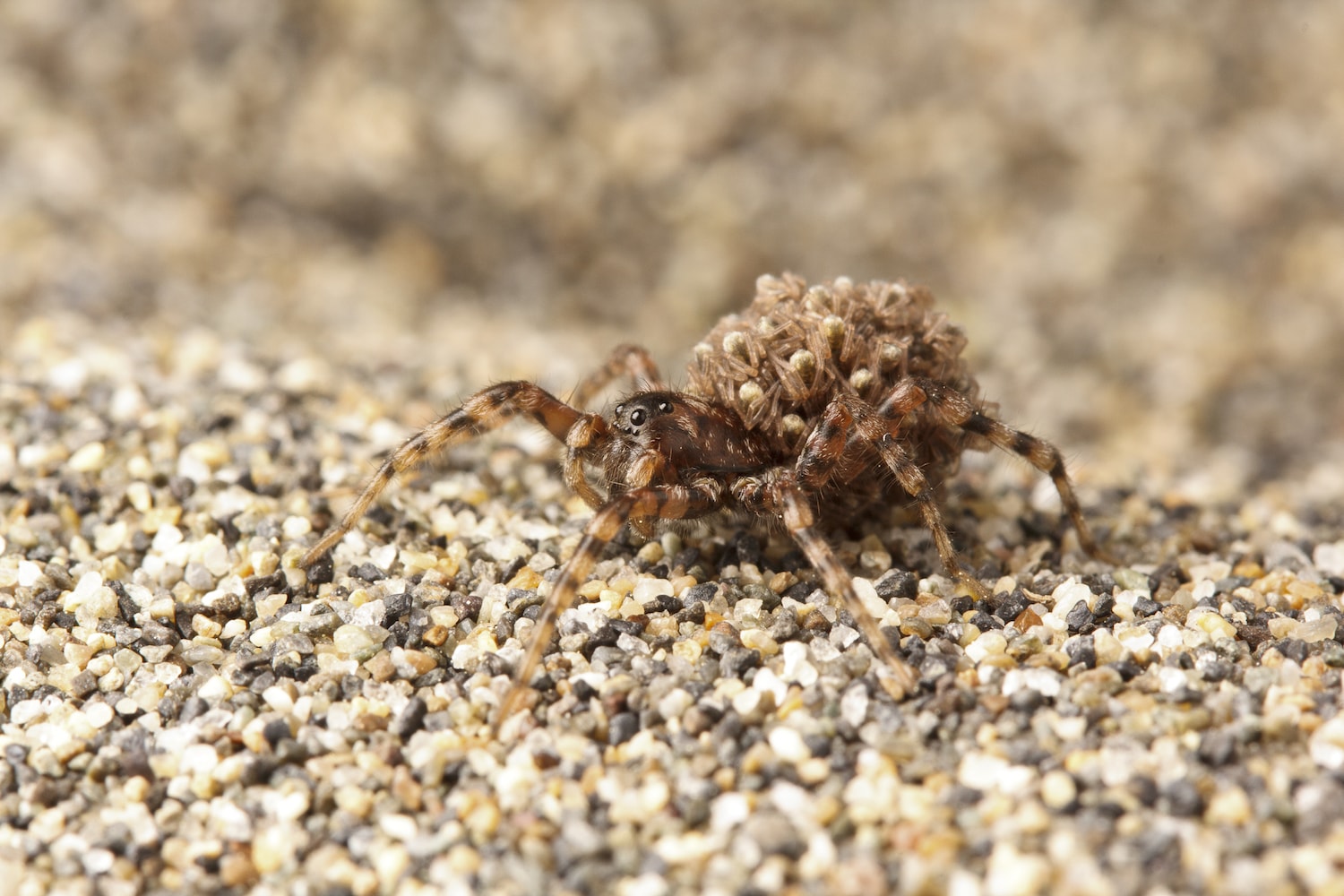
Aside from their slightly furry bodies and ability to hunt for food, the wolf spider (family Lycosidae) has little resemblance to the canine animal. They don’t hunt in packs, but rather pounce on prey like a tiger, Spicer Rice writes. Here a mama wolf spider carries her babies on her back. You’re more likely to encounter them during their peak season in the summer. Credit: Sean McCann/courtesy University of Chicago Press
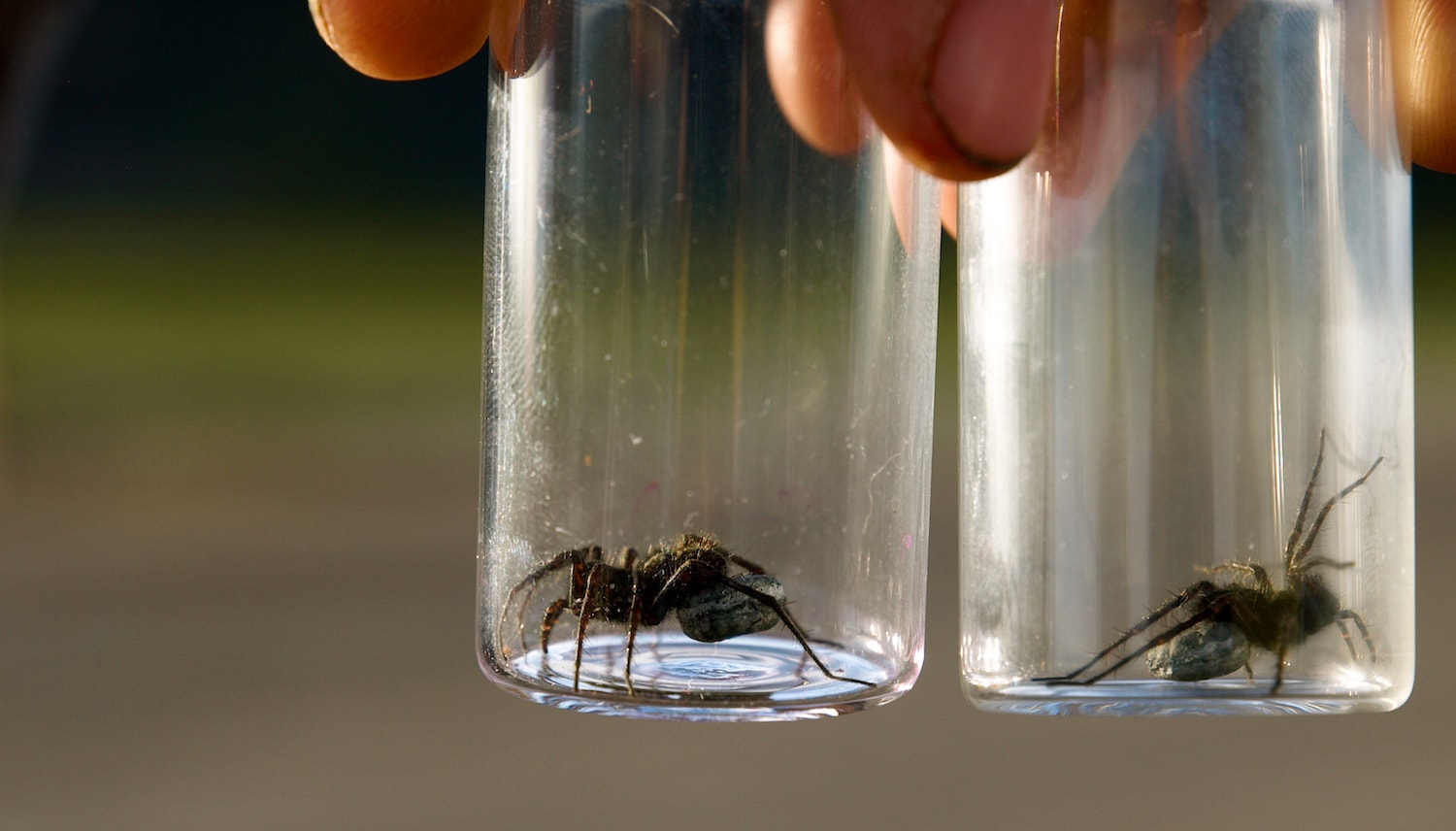
These female wolf spiders captured in vials are bearing eggs. Credit: Chris Buddle/courtesy University of Chicago Press
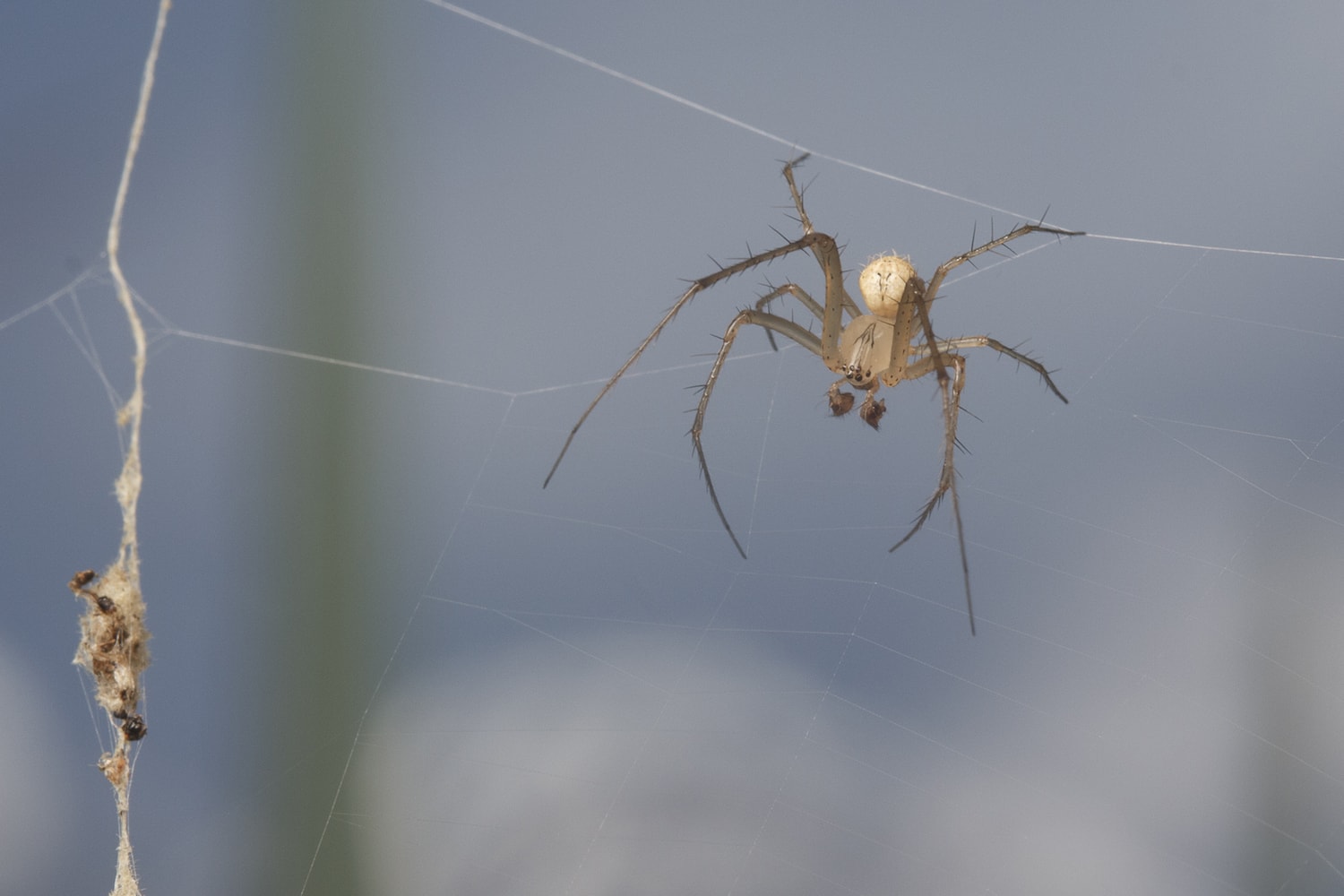
Pirate spiders (of the family Mimetidae) earn their names from their tendency to commandeer other spiders’ webs—eating the already captured insects and laying its eggs. Credit: Sean McCann/courtesy University of Chicago Press
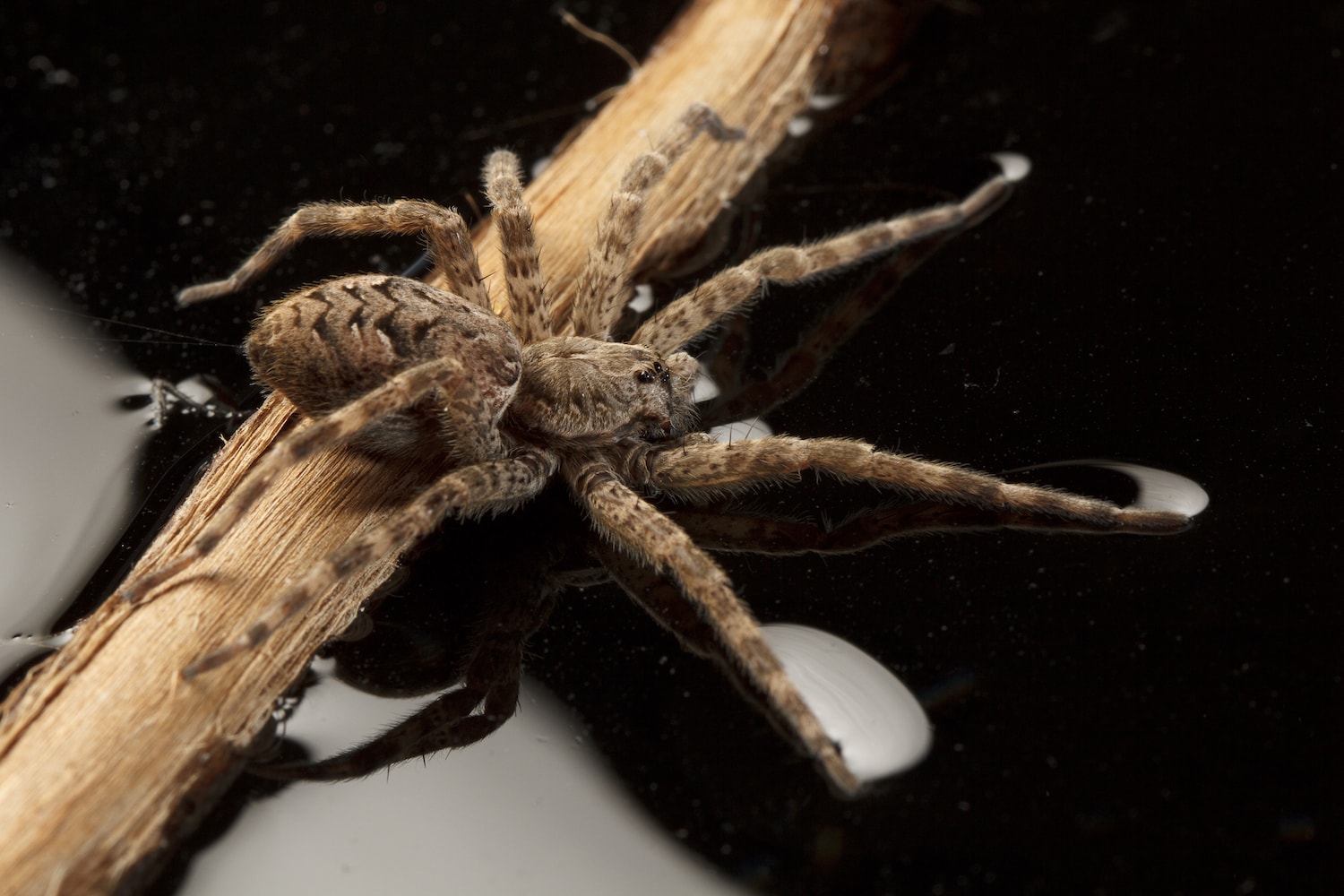
Spicer Rice’s first encounter with a fishing spider was when she was about eight years old and swimming in a lake in North Carolina. She had mistaken it for a mouse skidding about the edge of a pier. When she swatted it into the water, much to her eight-year-old horror, the spider started to run towards her and her friends on the water’s surface. The fishing spider, one of the largest spiders in North America, can catch insects, spiders, tadpoles and small fish, and even hide underwater without drowning. But don’t worry. They won’t attack you if you leave them alone. Credit: Sean McCann/courtesy University of Chicago Press
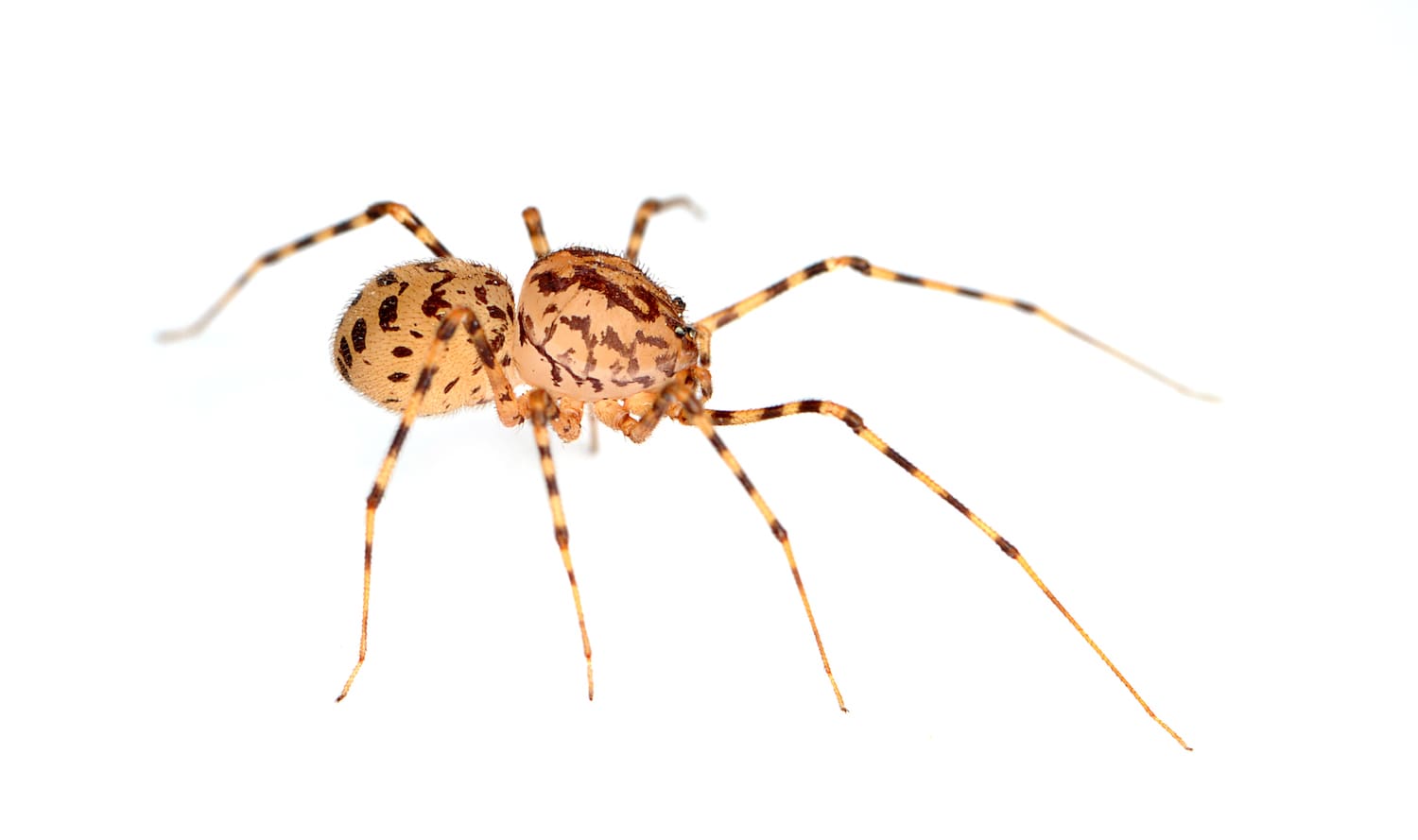
Spitting spiders are what Spicer Rice describes as “good-looking spiders.” But these beauties hurl “death loogies” made of glue and silk at their prey, which bog down the victim and make it easy for them to gobble the meal up, explains Spicer Rice. Credit: Matt Bertone/courtesy University of Chicago Press
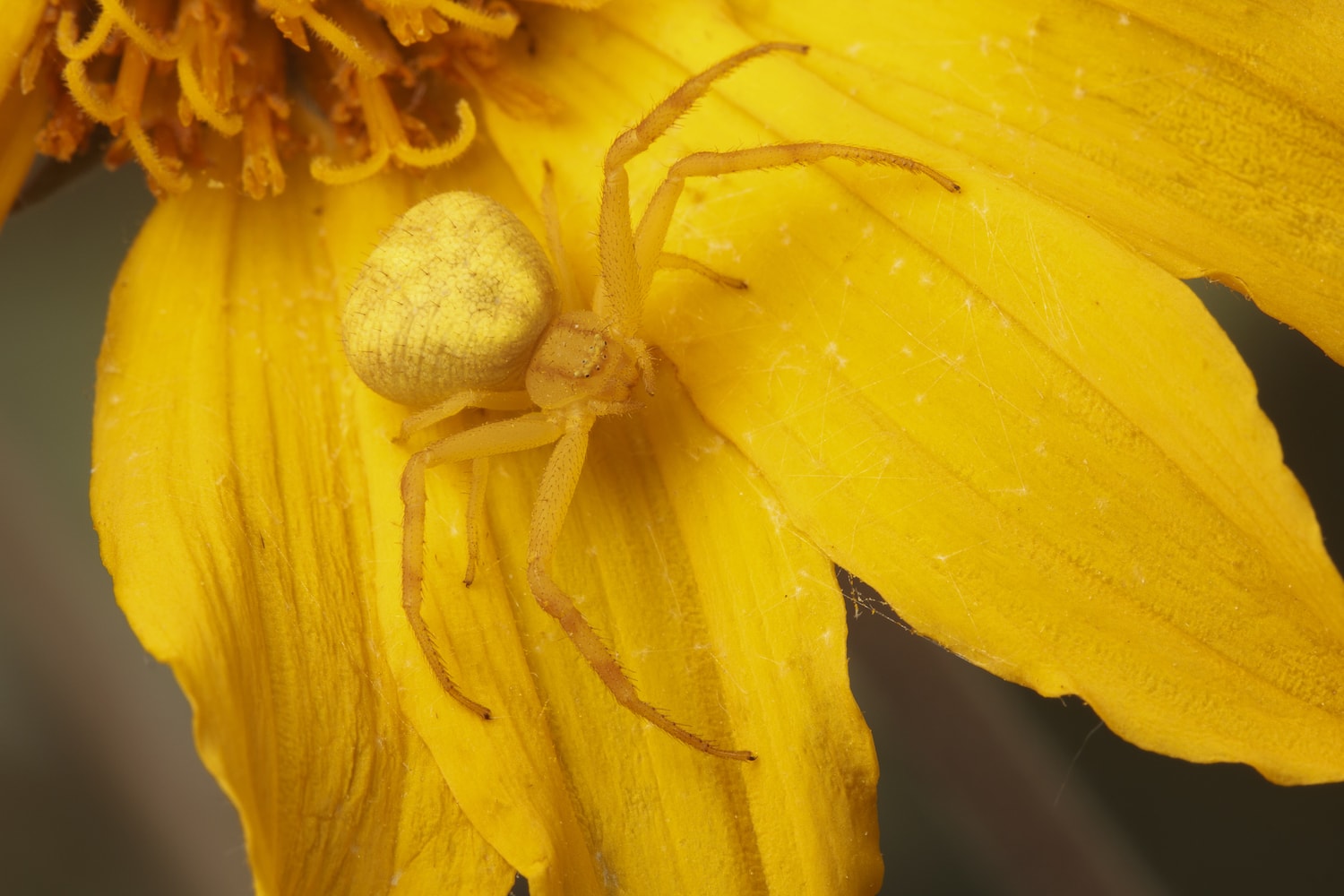
Goldenrod crab spiders (Misumena vatia) can change colors like little chameleons, says Spicer Rice. They can shift pigment in their cells to blend into their surroundings, like this one perched on a flower. Credit: Sean McCann/courtesy University of Chicago Press
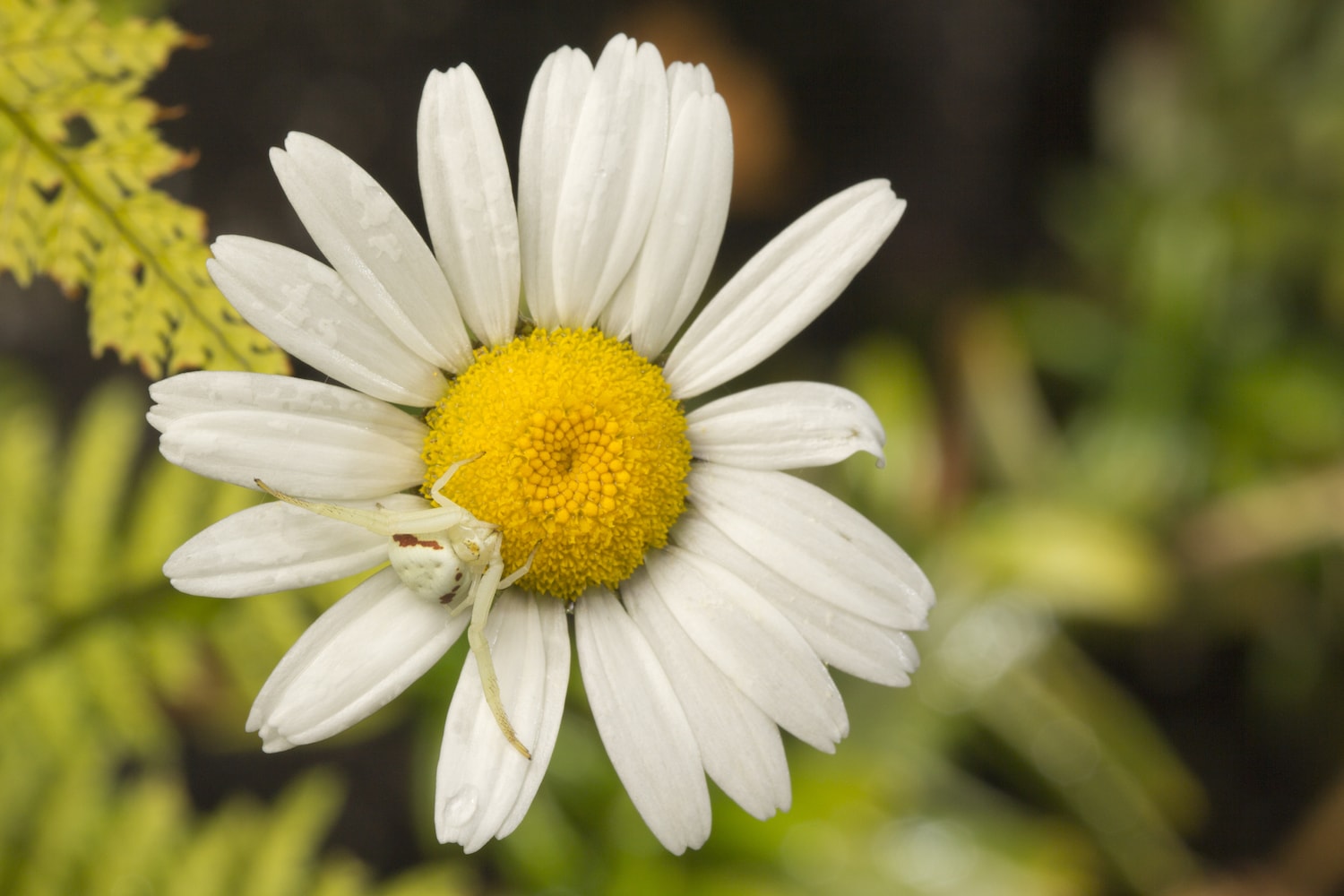
Can you spot the crab spider? Credit: Sean McCann/courtesy University of Chicago Press
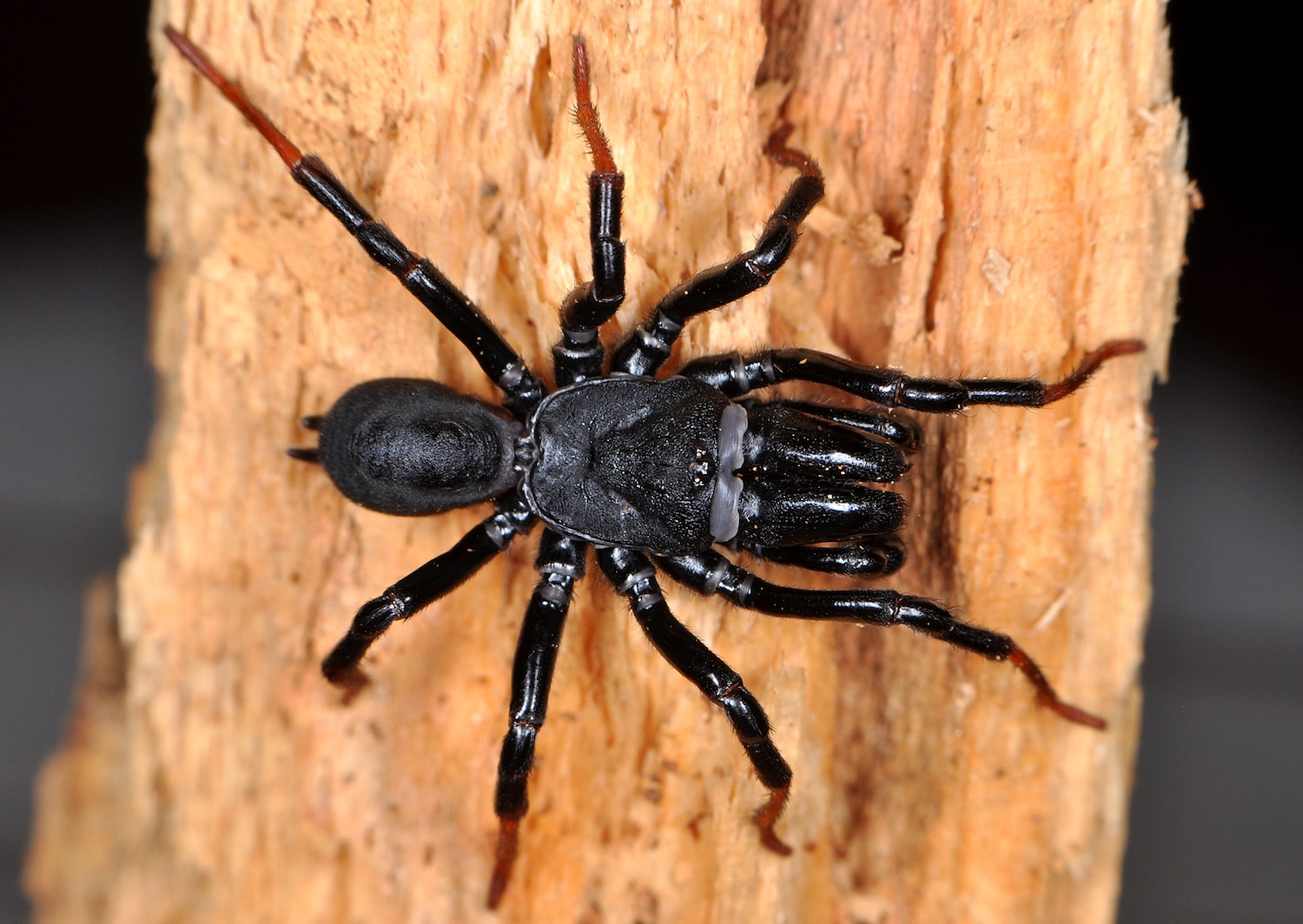
The black purse-web spider is a close relative to tarantulas. They are classified as mygalomorphs, or “primitive” spiders that share physical characteristics with early spiders. Credit: Chris Buddle/courtesy University of Chicago Press
Lauren J. Young was Science Friday’s digital producer. When she’s not shelving books as a library assistant, she’s adding to her impressive Pez dispenser collection.